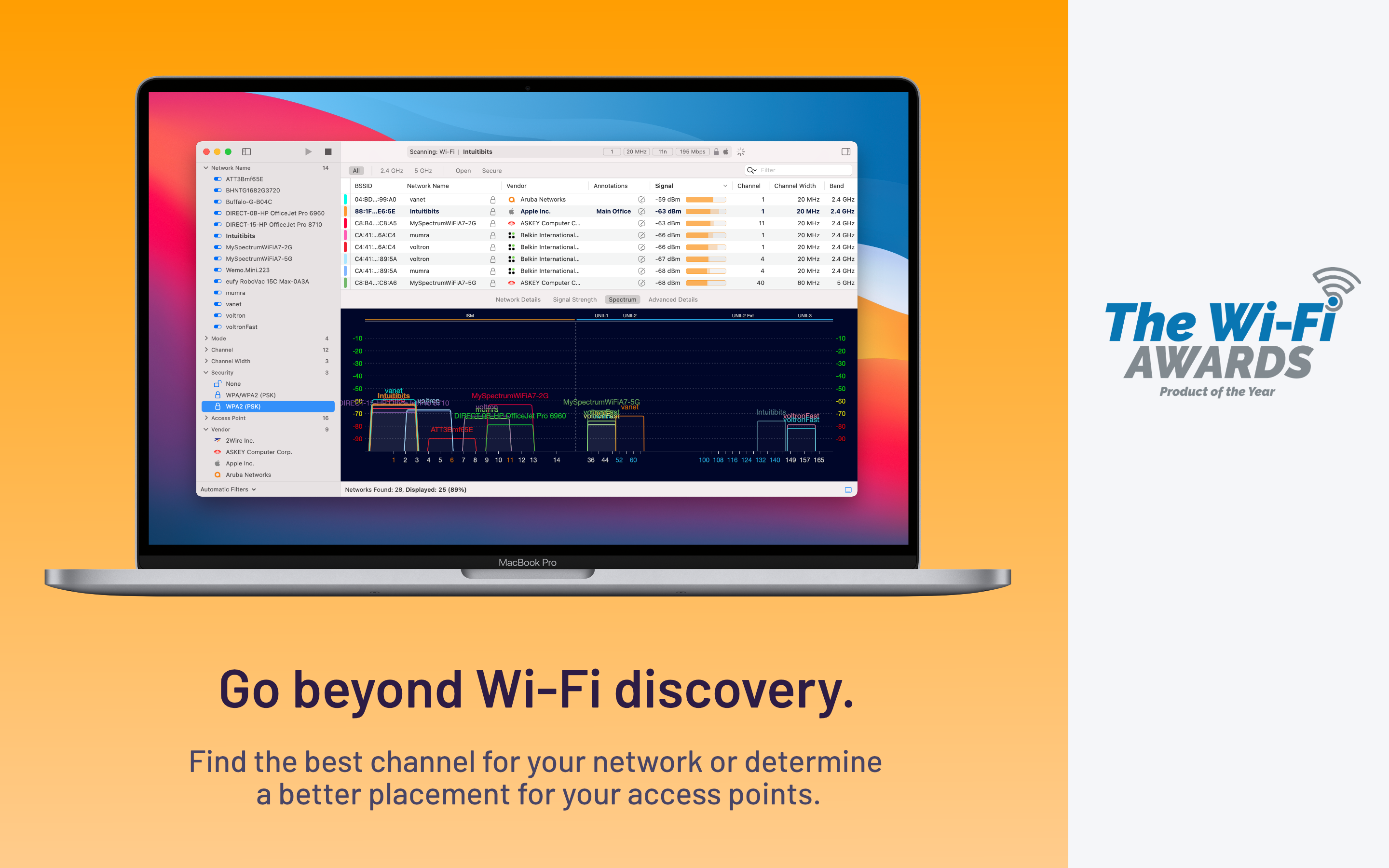
#Ios wifi explorer professional
The Wi-Fi community welcomed the professional version while I continued to polish WiFi Explorer, making changes to modernize the user interface as new versions of macOS were released.
#Ios wifi explorer pro
Thus, I first launched WiFi Explorer Pro on June 2017, and a new, re-designed version, WiFi Explorer Pro 3, on November 2020.

Eventually, as WiFi Explorer matured and to avoid making it overly complex, especially for home users, I decided to fork the project and implement a professional version to meet the requirements of WLAN professionals.
#Ios wifi explorer full
Attending WLPC was a great experience, and I came home with a notebook full of ideas. To this day, the “Advanced Details” tab provides handy packet-level info for troubleshooting many issues without the need for packet captures and protocol analyzers like Wireshark.Īs the app was growing in popularity among Mac users in the Wi-Fi community, I first attended the Wireless LAN Professionals Conference (WLPC) in February 2016 to learn more about Wi-Fi and hear from the users themselves what their needs were. This feature revolutionized Wi-Fi scanners, as it wasn’t a capability that existed before, at least not to the level of detail that WiFi Explorer had. The knowledge I acquired studying for the certification and the interactions on social media led me to implement many new features, including the “Advanced Details” tab, which allows users to inspect the information elements that networks advertise in the beacon and probe response frames. I also started looking into the CWNP program and became CWNA certified. I woke up in 2013 to WiFi Explorer being the most downloaded app in the Mac App Store!īy that time, I had become more involved with the Wi-Fi community, especially on Twitter. It wasn’t until December 30, 2012, that the app really took off after a review published by Macworld (which still had a paper edition back then). For a year, the app did just fine and got a few new features and improvements. I spent my Holiday vacation in 2011 working on a very rough first version and launched WiFi Explorer 1.0 shortly after, in January 2012. However, not being a fan of jailbreaking myself, I started looking into Wi-Fi scanning on macOS and chose to write WiFi Explorer. Still, I was disappointed that we no longer had any options for Wi-Fi scanning using an iPhone and decided to make WiFi Analyzer available for jailbroken iPhones.

When Apple pulled out WiFi Analyzer from the App Store, it didn’t surprise me since I knew using private frameworks (required for Wi-Fi scanning) would eventually be banned. Developing WiFi Analyzer was a great learning experience! My experience in Wi-Fi networks was limited to the research and development of routing protocols for mobile ad-hoc networks. When I wrote WiFi Analyzer, I didn’t know anything about iOS development, Objective-C, and, to be honest, not much about Wi-Fi either. Sadly, WiFi Analyzer only lasted a few months in the market after Apple removed it from the App Store in March 2010, permanently banning WiFi Analyzer and other Wi-Fi scanners from the App Store. I came up with the idea of developing a Wi-Fi scanner for macOS after the successful release of an iPhone version, called WiFi Analyzer, back in 2009. Today is the 10th Anniversary of WiFi Explorer! I released the first version of WiFi Explorer on the Mac App Store ten years ago, on January 17, 2012.


 0 kommentar(er)
0 kommentar(er)
